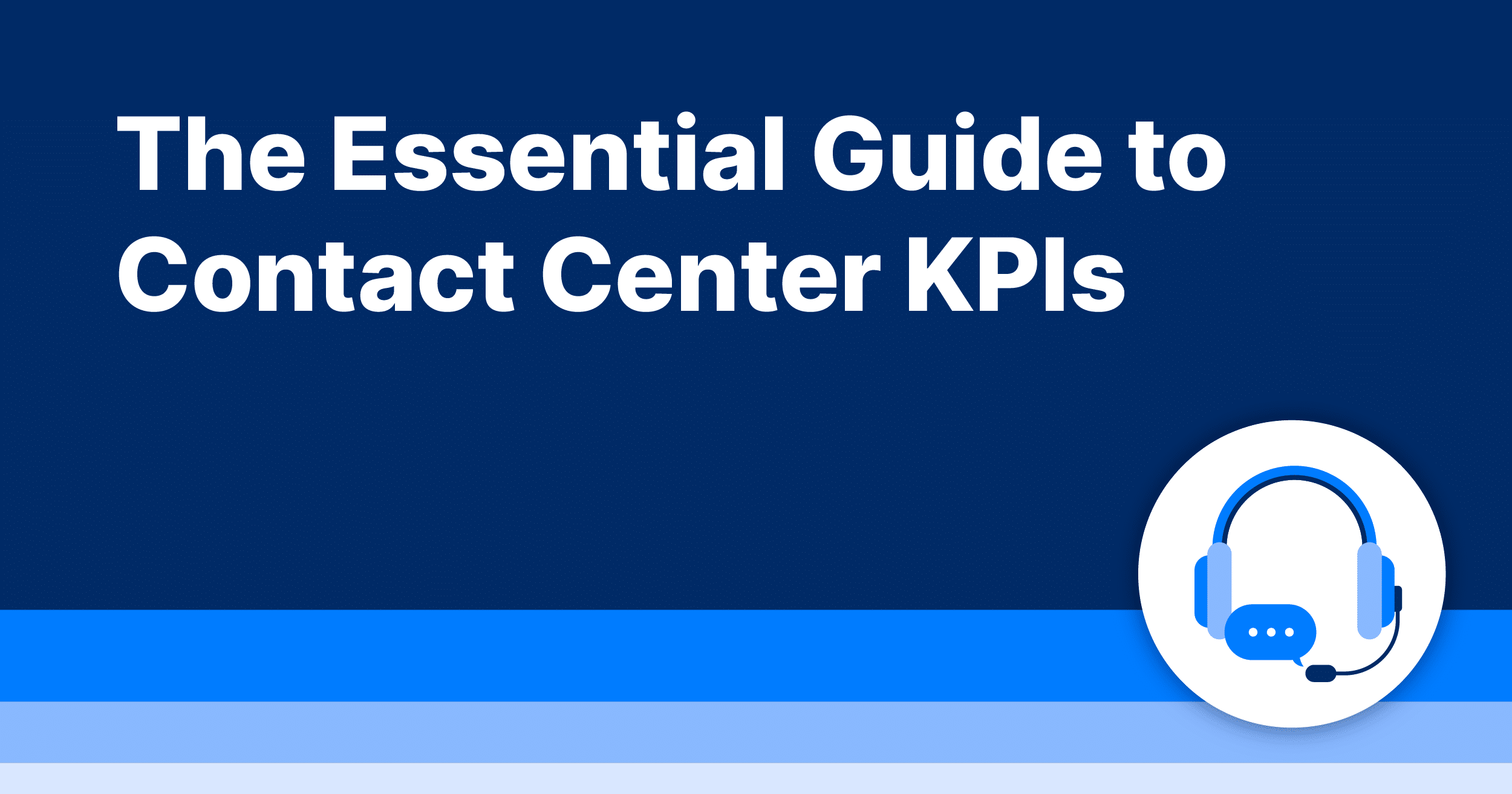If you’re running a contact center, you already know the importance of maintaining a high level of customer satisfaction while ensuring operational efficiency. Incredibly, two-thirds of customers say they experience long wait times while dealing with customer service teams. But how do you measure these abstract goals? Enter KPIs (Key Performance Indicators) and metrics. In this blog post, we’ll explore the eight most crucial contact center KPIs that will help you monitor performance and achieve your business objectives.
1. First Call Resolution (FCR)
First Call Resolution is one of the most critical Contact Center KPIs, focusing on resolving customer issues during the first interaction. High FCR not only boosts customer satisfaction but also reduces operational costs.
Why It’s Important:
- Customer Satisfaction: Customers love not having to call back for the same issue.
- Operational Efficiency: Resolving issues on the first call reduces the number of follow-up calls, freeing up resources.
How to Measure: Calculate the percentage of issues resolved on the first call by dividing the number of first-call resolutions by the total number of calls, then multiply by 100.
2. Average Handle Time (AHT)
Average Handle Time measures the average duration an agent spends on a call, including hold time and after-call work. It’s a balancing act; you want efficient service without rushing the customer.
Why It’s Important:
- Efficiency: Lower AHT generally indicates higher efficiency.
- Customer Experience: Extremely low AHT might mean the agent is rushing, affecting service quality.
How to Measure: Add the total talk time, hold time, and after-call work time, then divide by the number of calls handled.
3. Customer Satisfaction Score (CSAT)
CSAT gauges customer happiness with the services they receive. Usually measured through post-interaction surveys, CSAT can provide insights into your contact center’s performance from the customer’s perspective.
Why It’s Important:
- Direct Feedback: Offers a straightforward measure of customer satisfaction.
- Service Improvement: Identifies areas needing improvement.
How to Measure: Typically, CSAT is measured using a scale (e.g., 1-5), where customers rate their satisfaction. Calculate the percentage of satisfied customers by dividing the number of positive responses by the total number of responses, then multiply by 100.
4. Net Promoter Score (NPS)
Net Promoter Score measures the likelihood of customers recommending your service to others. It’s a good indicator of customer loyalty and overall brand perception.
Why It’s Important:
- Customer Loyalty: NPS is closely linked to customer loyalty and long-term satisfaction.
- Word of Mouth: High NPS can lead to positive word-of-mouth referrals.
How to Measure: Customers are asked to rate their likelihood of recommending your service on a scale of 0-10. Subtract the percentage of detractors (0-6) from the percentage of promoters (9-10) to get your NPS.
5. Service Level
Service Level measures the percentage of calls answered within a specified time frame. It’s vital for assessing how well your contact center manages its call volume.
Why It’s Important:
- Customer Experience: High service levels mean customers spend less time waiting.
- Operational Benchmark: Helps to ensure you have adequate staffing levels.
How to Measure: Set a time threshold (e.g., 80% of calls answered within 20 seconds). Calculate the percentage of calls answered within this threshold out of the total number of calls.
6. Abandonment Rate
Abandonment Rate is the percentage of callers who hang up before reaching an agent. High abandonment rates usually indicate long wait times, which can frustrate customers and harm your reputation.
Why It’s Important:
- Customer Experience: High rates are often a sign that customers are dissatisfied with their wait times.
- Resource Allocation: Helps in adjusting staffing levels and improving IVR efficiency.
How to Measure: Divide the number of abandoned calls by the total number of incoming calls, then multiply by 100.
7. Agent Turnover Rate
Agent Turnover Rate measures the rate at which agents leave the organization. High turnover rates can disrupt service quality and increase recruitment and training costs.
Why It’s Important:
- Operational Stability: Low turnover rates contribute to a stable, experienced workforce.
- Cost Efficiency: Reducing turnover saves on recruitment and training costs.
How to Measure: Divide the number of agents who leave during a period by the average number of agents, then multiply by 100.
8. Occupancy Rate
Occupancy Rate measures the percentage of time agents spend handling calls compared to being available. It’s a key indicator of agent productivity.
Why It’s Important:
- Agent Productivity: High occupancy rates indicate efficient use of agents.
- Financial Performance: Ensures you are getting the most out of your human resources.
How to Measure: Divide the amount of time agents are actively handling calls by the total time they are logged in, then multiply by 100.
Putting it All Together
Monitoring and analyzing these Contact Center KPIs can provide a comprehensive view of your contact center’s performance. However, it’s crucial to remember that no single KPI tells the full story. A balanced approach that considers a combination of these KPIs will provide the most accurate and actionable insights.
- Utilize Technology: Use advanced contact center software to track these KPIs in real-time. Automated reporting tools can save time and reduce errors.
- Set Benchmarks: Establish clear benchmarks and targets for each KPI. This will help you gauge performance against industry standards and internal goals.
- Regular Reviews: Conduct regular performance reviews. Analyze trends over time to identify areas for continuous improvement.
- Agent Training: Invest in continuous training programs for agents to improve key metrics like FCR and AHT. Well-trained agents are more efficient and provide better customer service.
- Customer Feedback: Actively seek and analyze customer feedback. This will help you understand the reasons behind your CSAT and NPS scores.
How AI and Automation Can Help Keep KPIs in Check
Implementing AI and automation tools can provide a substantial lift in maintaining key contact center KPIs. Here’s how:
- Automated Routing: AI can efficiently route calls to the most appropriate agent, increasing First Call Resolution rates. Intelligent routing ensures that calls are handled by agents best suited to resolve the issues.
- AI-Powered Chatbots: AI chatbots can handle routine inquiries and initial customer interactions, reducing Average Handle Time and improving Service Levels. By managing simple queries, chatbots free up human agents for more complex issues.
- Predictive Analytics: Real-time analytics powered by machine learning algorithms can predict call volumes and customer behavior, allowing better resource allocation. This helps in managing Occupancy Rates and minimizing Abandonment Rates.
- Sentiment Analysis: AI-driven sentiment analysis can gauge customer emotions during interactions, enabling agents to adjust their approach in real-time. This can lead to improved Customer Satisfaction Scores and enhance overall customer experience.
- Agent Assist Tools: AI can provide real-time recommendations and next-best-action suggestions to agents during calls, aiding in faster and more accurate resolution. These tools can significantly enhance First Call Resolution rates and reduce Average Handle Time.
- Personalized Training: Machine learning algorithms can analyze each agent’s performance and custom-tailor training programs to address their specific areas for improvement. Personalized training can help reduce Agent Turnover Rate and improve agent productivity.
- Automated Reporting: AI can automatically generate detailed reports on key performance metrics, providing managers with actionable insights without the manual effort. This ensures that all KPIs are continually monitored and addressed promptly.
Final Thoughts
Understanding and tracking contact center KPIs is vital for any business aiming to improve customer service and operational efficiency. By focusing on these essential metrics, you can make data-driven decisions that boost both agent performance and customer satisfaction. AI and automation tools can provide the extra edge needed to keep these KPIs in check, ensuring a consistently high level of service and operational efficiency.
Implementing a robust KPI tracking system is not just about monitoring numbers—it’s about creating a culture of continuous improvement and excellence in customer service.
Start focusing on these KPIs today, and transform your contact center into a powerhouse of customer satisfaction and operational efficiency. Your customers—and your bottom line—will thank you.
Ready to dive deeper into Contact Center KPIs or curious about how AI can help?














































